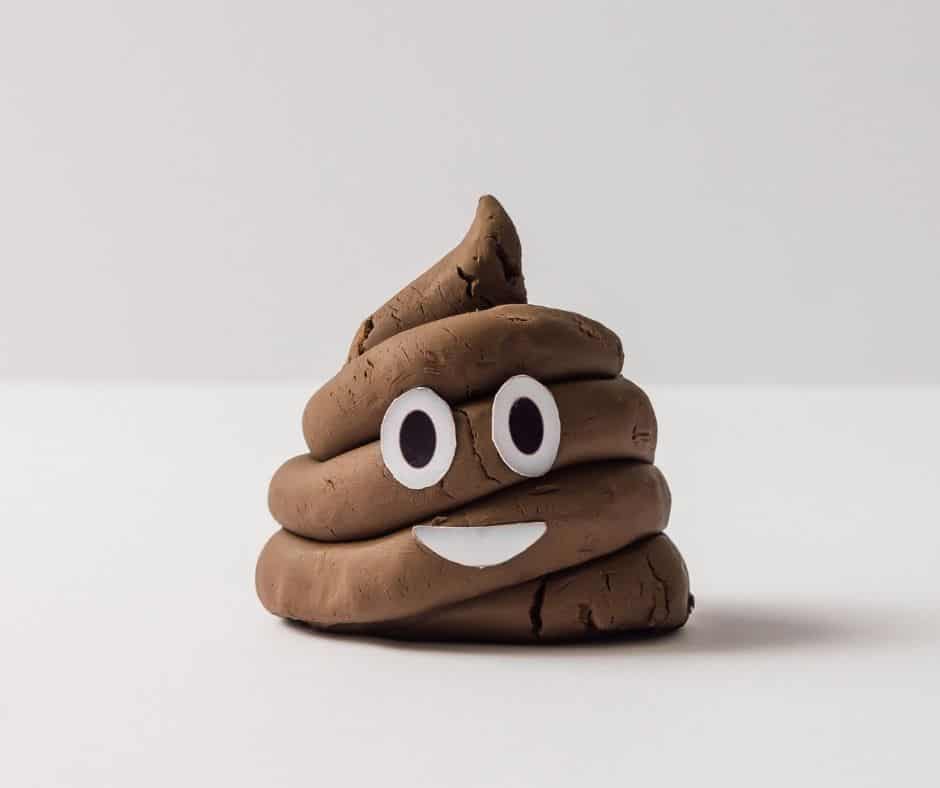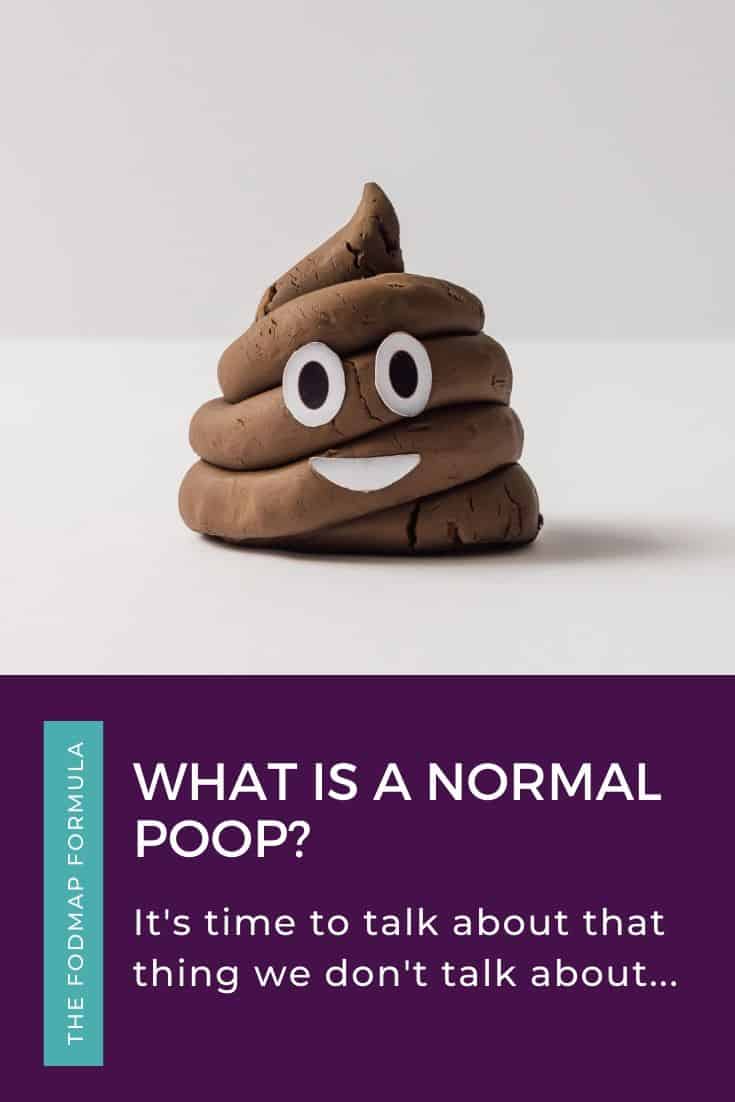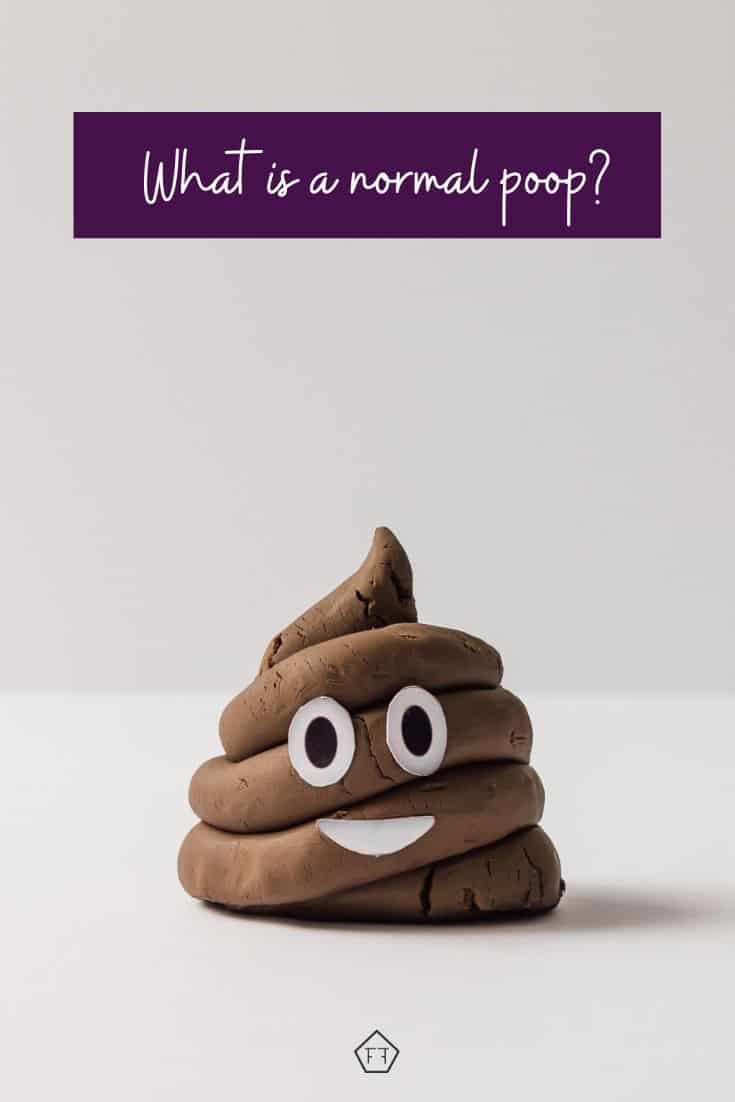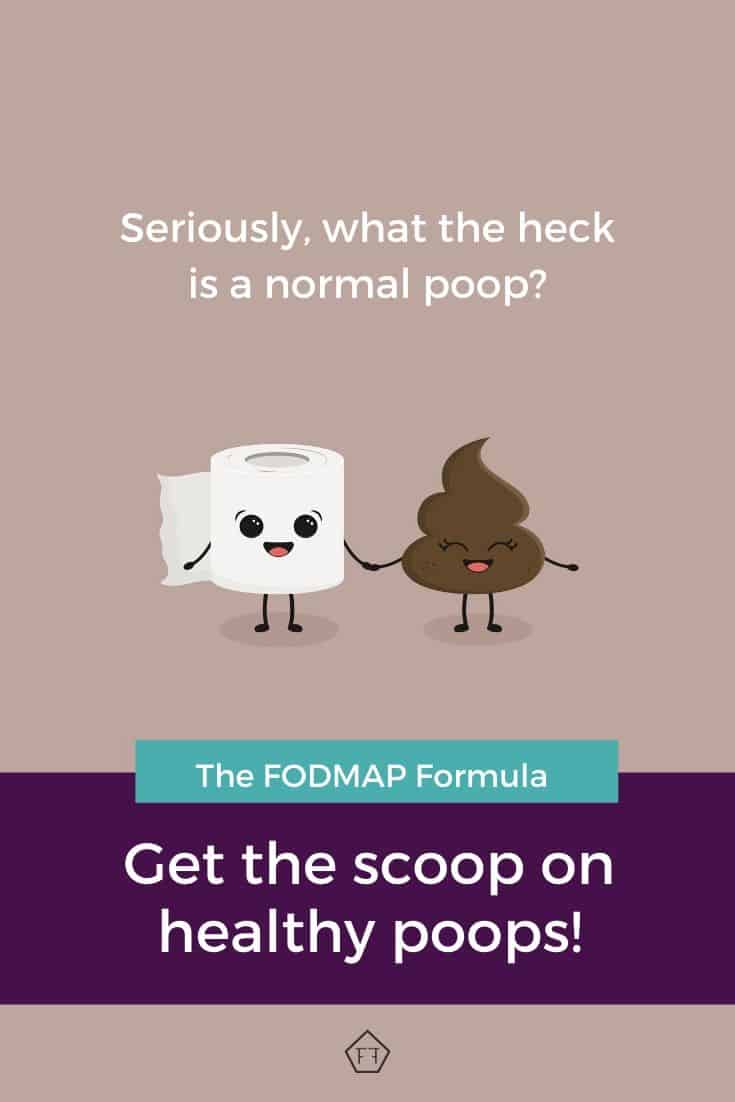For some reason, talking about poop is a huge taboo. But everybody does it! So it’s high time we had a conversation about what “normal” poop looks like. In this article, you’ll get a better idea of what you’re looking at when you peek in the bowl and, more importantly, when you should chat with your doctor!

How do we poop?
Poping is more complicated than “food goes in; poop comes out.” So let’s take a second to talk about how your body transforms tasty food into something you can’t talk about at the dinner table.
Care for a bite?
The first thing you need to know is that digestion starts in your mouth. As you chew your food, enzymes in your saliva begin to break down your food, while the physical act of munching cues your brain to make more room in your digestive system.
Your brain does this by triggering a sequence of muscle contractions called “peristalsis waves.” These waves help nudge your food through each phase of digestion by gently squeezing it through your digestive system. Making room for whatever you’re munching!
Homemade juicing
Once you’ve finished chewing your food, it travels down your esophagus and into your stomach. Here the stomach uses a combination of acids, enzymes, and brute force to transform your food from something delicious into a liquid called “chyme.”
When your food has reached its liquid state, your stomach will open a tiny sphincter and plop a small amount of chyme into the small intestine. Your stomach will continue to send out the chyme in small batches until it’s empty.
This process is called “gastric emptying,” and it can take 1 – 2 hours depending on how much you’ve eaten. This time delay allows your body to control how much food enters the small intestine at one time (thanks, friend!)
Side note! This is one of the reasons it may be easier to tolerate high FODMAP foods when they’re eaten as part of a larger meal. This means if you eat a variety of high and low FODMAP foods in one sitting each batch of chyme should contain smaller amounts of high FODMAP foods than if you ate them on their own.

Beam me up
Once the chyme has entered the small intestine, your body begins to absorb the nutrients it needs by pumping small molecules across the intestinal wall and into your bloodstream.
Single molecules like fructose are small enough to be whisked away from the get-go while larger compounds like lactose, oligosaccharides, and polyols, and complex compounds like proteins are broken down by enzymes and bile until they’re small enough to cross the intestinal lining.
The original recycling program
When your body has absorbed all of the nutrients it can, the chyme is pushed into the large intestine (a.k.a the colon). Once in the colon, your body will re-absorb any bile and water it can (waste not want not!).
While your body is busy doing that, your gut bugs start munching on anything your small intestine couldn’t break down and absorb.
If you have trouble absorbing certain sugars or fats (like people with IBS), this gut bug buffet can lead to symptoms like bloating and pain.
But your gut bugs are also performing some pretty essential services for you! For example, some of your gut bugs break down vitamins and create essential fatty acids that our bodies can’t produce on their own.
They can also produce chemicals that help our guts talk to our brains, help our immune system identify intruders, and help us control pain. So be kind to your buggies! They’re working hard for you.
Once the large intestine has reclaimed everything it can, what’s left is essentially waste. Technically this is called stool. But let’s get real, friend! It’s poop!!
Once your poop is ready to be evacuated, a final peristalsis wave will push the stool into your rectum. This triggers stretch receptors in the lining of the rectal canal that tell your brain it’s time to find a washroom!
What is a normal poop?
Just so you know, there’s no such thing as a “normal poop.” But there is a range of ideal circumstances for healthy bowel movements.
These include the shape of your stool, how frequently you have bowel movements, and if your experiencing pain, straining, or feel like your bowel movement was incomplete.
What does normal poop look like?
In case you didn’t know, poops are rated on a scale called the Bristol Stool Scale. This is a visual scale from one to seven, where stools in the 1-2 range are considered constipation, and stools from 6-7 are considered diarrhea.
Depending on the scale you’re looking at, the “ideal” range typically falls between 3 – 4 or 3 – 5 on the scale. You can download a printable Bristol Stool Scale made of chocolate and peanut butter in my VIP resource library! I find this version way easier to follow than the typical cartoon drawings.
How often should you poop?
Everyone’s body has a natural rhythm when it comes to moving food through the digestive system. Depending on your personal “motility,” and whether you suffer from issues like diarrhea or constipation, it can take anywhere from 90 minutes to 72 hours or more for your food to work its way from head to tail.
In a healthy person, the time it takes for food to travel through your entire digestive system is typically somewhere between 18-72 hours. This means some people may poop three times a day, while others might poop three times a week when everything is running smoothly.
That being said, if your stool is in the normal range according to the Bristol Stool Scale, but you’re moving your bowels more than three times a day, it’s still considered diarrhea. Similarly, if you’re going to the washroom less than three times a week, even if your poop is a perfect four when it arrives, you’ve still been suffering from constipation.
What if your poop is a weird colour?
The colour of your stool may change based on what you’ve eaten in the last few days or medications your taking. But changes in stool colour may also signal a problem somewhere in the body.
Heads up, healthy poops come in a range of colours from light yellow to dark brown. Changes in colour don’t always mean something is going wrong, but here are a few things to look out for.
Brown stools
This is the colour of a typical stool. The brown colour comes from bile that wasn’t absorbed back into the body and spent blood cells.
Depending on what you’ve eaten and how long the stool has been sitting in the colon, your poop may be anywhere from light yellow to dark brown.
Green stools
If you’ve eaten a lot of dark green foods like spinach or kale, if you’ve eaten foods with green food colouring like candies, popsicles, or coloured drinks, or if you’ve been taking an iron supplement, your poop may turn green (kale = alien poop!).
However, green stools can also be a sign that your body isn’t reabsorbing bile correctly or indicate there have been some changes in your microbiome.
Changes in your gut bug community can be caused by the use of antibiotics, bacterial infections, and some medical procedures.
While not all green poop is cause for alarm, if you’ve noticed your poop has been looking a little green and you’re not on a steady diet of kale and green beer, you might want to schedule a chat with your doctor.
Yellow stools
Sometimes yellow stool is just on the lighter side of the healthy poop scale. But if your stool is also really smelly, or if it floats in your toilet bowl, it can be a sign that you’re not fully digesting or absorbing the fat in your diet.
While fatty stool may happen occasionally, if it’s happening regularly, you should schedule a check-in with your healthcare team.
White, grey, or clay coloured stools
These quirky coloured stools can be caused by some medications (like Pepto Bismol and barium). In these cases, your stool should return to its normal colour once the drug has passed.
If your poop turns pale on its own, though, it can be a sign that your body isn’t releasing enough bile. This can be caused by a blockage in the ducts that allow bile into the digestive system, or it might signal a problem with your bile production. Either way, you’ll want to make an appointment with your healthcare team to see what’s up.
Red, burgundy, or black stool
Some foods, like black licorice, beets, and food colouring, can give your poop a dark hue. Some medications and supplements (like iron pills) may also cause your stool to turn black. But red, burgundy or black coloured stools may be also a sign that there is blood somewhere in your digestive tract.
The first thing you need to know is that the closer the source of the blood is to the anus, the brighter the colour will be. So if you see bright red when you wipe, it may be a sign of something near the end of your digestive tract, like a hemorrhoid or fissure in the rectum or anus.
The farther up the digestive tract you go, the darker the blood will become. So, if the source of the bleeding is in the stomach, for example, your poop may look black and tarry because it’s been digested along with your food.
Heads up, if you see unexplained blood in your stool, always seek medical attention. Yes, for all blood. Yes, even a little blood. No, Dr. Google doesn’t count!
Remember, even if the cause is something mundane, you need to know how to care for it properly. You can’t do that if you’re not sure what it is!
Final thoughts
Because our bodies are so different, there is no such thing as a “normal poop.” Instead, there is a range of conditions that are used to describe a healthy bowel movement.
This includes bowel movements that fall within 3-4 on the Bristol Stool Scale, that happen between 3 times per day to 3 times per week, and that happen without pain or straining.
You might also like one of these:
- Is your gluten sensitivity really an intolerance to fructans? Gluten isn’t the only thing in your grains that can turn your tummy! Check out this article to understand the difference between gluten and fructan sensitivity and how to find out which one you’re actually reacting to.
- Using enzymes on the low FODMAP diet Wondering if enzymes can help you tolerate high FODMAP foods? Here’s what you need to know about enzymes and the low FODMAP diet.
- What are probiotics and prebiotics? Wondering if adding probiotics or prebiotics to your daily routine will help tame your IBS symptoms? Here’s the scoop on how these cheeky little bugs can help or hurt you.
If you like this post, don’t forget to share it! Together we’ll get the low FODMAP diet down to a science!




